
After my review of How to Train Your Dragon 2, I got to thinking about the kinds of movies I used to watch when I was young, and although I remember being subjected to a myriad of tripe during that time, those movies didn’t have the same kind of lasting impression on me as the good ones did. And no, I’m not simply talking about the ones that were released during my childhood because there is a smorgasbord of wonderful films made many years–decades even–before I was born, and the value I have for them is more than merely a feeling of nostalgia. They stuck with me, whether it was a great character, a helpful lesson, haunting imagery or an interesting story that kept me involved every step of the way.
So rather than write another brief review of the quality of recent release from Hollywood, I’ve decided to lay out and describe five aspects of a movie experience that we should see more of in children’s films than we currently are. I’ll also include an example of at least one children’s film that performed this task well. This is not only to highlight the point I’m making but also to offer something good to watch in case you’re looking to add something to the kids’ movie library.
To preface myself, I want it to be understood that this is strictly my opinion and am only speaking from my own experiences. If you disagree, that’s perfectly fine. I understand that some of you out there are parents–I am not, but I was a teacher for four years–and that some of you may not approve of your children being subjected to certain things. If you feel as though I’ve overlooked some other movie, keep in mind that I haven’t watched EVERY children’s film ever made, so when I cite an example, I’m not suggesting that it’s the best or only one; I simply can’t talk about something I haven’t seen.
These aren’t really in any order of importance…except for maybe the last one. So without further screwing around, let’s jump into this!
1. You don’t have to play dumb.
Believe it or not, kids are a lot smarter than we realize and can pick up subtleties and innuendos just as well as us. Half-assed family films with little to no effort or substance to them really irritate me because it comes from the false notion that kids are stupid and will watch any shiny, flashy, silly crap put to celluloid. And it’s true that some of these movies can be commercially successful…

This piece of junk grossed $260 million domestically!
…a smarter film with a little thought more put into it doesn’t create a recipe for disaster.

$293 million domestically…thankfully!
Assuming that everyone has already seen Up, another good example that some of you may or not be familiar with is The Great Mouse Detective.
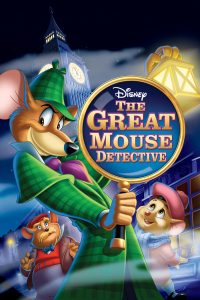
If you aren’t familiar with this one, it’s basically just Sherlock Holmes for kids. But what I loved about this film was that the main characters are all really smart and constantly trying to outwit each other, and as a kid, I wanted to be as smart as these characters. With educational standards decreasing, putting out media that can either educate or stimulate intellectual curiosity would be an absolute boon to the well-being of our children.
2. Children can handle death.
A trend I’m beginning to notice more frequently in family films is that death isn’t as common as it used to be. While I don’t think that every film needs a death, especially from the antagonist, having characters die is typically shied away. Many times I’ve watched a character sustain an injury so severe that he or she should have died, but whenever it happens, you hear the character exclaim, “I’m okay!” off-screen.
Death terrifies many of us because it’s an unavoidable tragedy, but that’s just it; it’s unavoidable. It’s part of life, and even children understand that it’s going to happen some day. Treating death with kid gloves (pardon the pun) gives children an unrealistic view on it, in my opinion. If dealt with appropriately, it can be very affective in teaching kids about the dangers of the world or the simple laws of nature.
While there are plenty of old Disney movies that have illustrated this point time after time, one film released in 1994 took it a step further.

The Lion King may have had a big happy ending, but none of that took away from the huge death toll. Not only are the characters of Mufasa and Scar brutally killed, trampled to death and eaten alive respectively, but hundreds if not thousands of animals in the kingdom starved to death during Scar’s tyrannical rule, and despite Simba’s best efforts, none of that brings anyone back from the dead. It wasn’t bad enough that Simba had to witness his father died and find the body under the assumption that it was his fault, but he’s haunted by his father’s ghost several years later.
That’s some pretty heavy stuff to be putting in a film for children. But they were able to handle it. As it turns out, enough kids were able to handle it to have the movie gross $423 million domestically. That’s #2 all time…noticing a pattern yet?
3. It’s okay for a movie to be scary.
Remember these happy moments from your childhood?
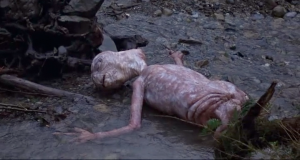

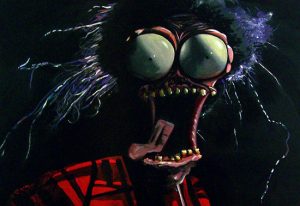
In case you don’t, those are scenes from E.T. the Extra-Terrestrial, Pinocchio and Pee-Wee’s Big Adventure. And yeah, all of these horrifying images that will be visiting you in your nightmares tonight were from movies aimed at children. (You’re welcome, by the way.)
I know that we want our kids to grow up living happy and healthy lives, but much like death, fear is also a part of life, and since there are scary things out in the world, it’s important for our kids to learn that not only do scary things exist but that it’s also okay to be scared. Even if there isn’t a lesson to be taken from a good scare, sometimes we like to have our vulnerability challenged and kids are no different. It’s the same reason we go to haunted houses or ride roller coasters. Being scared can be exciting. Have you ever faced a fear? If you did so successfully, didn’t you feel really good afterwards? Why? Because you took on a challenge and you succeeded.
Fantasy films seem to be the one genre left that isn’t afraid to make the audience afraid. The 1980s gave us many examples, but my personal favorite is this one.
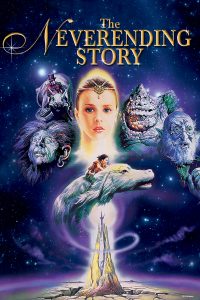
What I think made this film even more affective for younger audiences is that while our story’s main protagonist is also a child, another child from the real world is reading the story and facing the adventure with him, and so are we. So when the happy ending comes, we feel triumphant and brave too, and even if it’s a small victory, our kids deserve that feeling every once in a while.
4. Keep the lesson clear without beating us over the head with it.
Have you ever been watching a movie that had a very clear message it was trying to get across in a painfully obvious way, and even at the end, one of the characters has to give a hackneyed and impersonal speech that summarizes whatever the lesson is? Don’t you hate that? This is along the same lines of not playing dumb to kids, but this one is a bit more specific and doesn’t really have as much to do with rousing the intellect. The big Aesop-like moral at the end is staple for nearly every children’s film ever made, and I’m certainly not opposed to having something to take away from a movie, but if you’re going to go that route, give the audience a little more credit. Two films that portray this perfectly are Willy Wonka and the Chocolate Factory and The Nightmare Before Christmas.
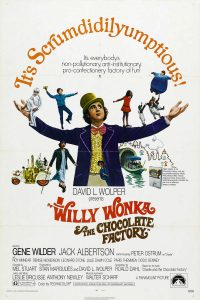
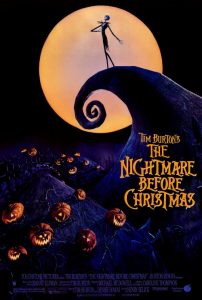
Do you remember the moral of each movie? Wonka’s was to always be true to yourself and honest, and Nightmare’s was the age-old story of the grass always being greener on the other side. (Much like The Wizard of Oz, now that I think of it.) Neither movie ever explicitly spells it out though. As an audience, we need to think about what we just went through and learn from it. If we’re spoon-fed the moral, we’ll actually have a harder time learning it because the movie did all of the thinking for us.
5. Take your movie seriously.
By this, I’m not saying that movies need to be completely serious and without a moment of levity to give us a break from the drama. I’m simply saying that if you’re going to tell a story, tell it because it deserves to be told, and don’t be afraid to let the serious moments linger if they should. Kids don’t need a joke or prat fall every five minutes to remain invested. They’re perfectly capable of grasping the seriousness of a moment as an adult. The last example I’m going to cite is not only a movie that highlights this final point but all of the others as well.
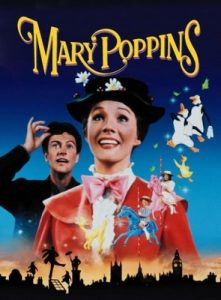
Before some of you get your pitchforks and torches, let me explain that yes, I know that the book’s author hated the movie and that Saving Mr. Banks portrayed Walt Disney in a better light than he deserved and the Dick Van Dyke’s accent is pretty silly, but as a stand-alone film, it’s brilliant. It has all of the fun elements without dumbing them down, a very bright protagonist with a keen wit, implicit and explicit deaths of characters, a few darker moments (although nowhere near as scary as the others), a great lesson that doesn’t feel like it’s poking you in the ribs to make sure that you’ve got it, but most importantly, the love, devotion and effort put into this film shine always shine through. I’ve seen this movie many times in my life, and every time I watch it, it feels like the first time.
Is it realistic to think that every kids’ movie that comes out is going to be another Mary Poppins? Of course not. Classics are rare and tend to come when we least expect them. That being said, however, it isn’t asking too much to demand better quality from Hollywood in regards to what’s being released for our children. What’s worse is that Hollywood really doesn’t have an excuse. They can’t claim that smarter children’s films don’t make as much money because most of the top grossing films in that genre have come from their projects that were a hit with critics. They can’t claim that certain topics or images might be too much for children to handle because millions of kids have seen these movies and not been damaged from them. The only excuse they might have left is nothing more than a justification for laziness. Lest we forget, Hollywood is a business first and a supporter of the arts second, so making money is always going to be priority no. 1, and if there’s a shortcut to making money, they’re going to exploit it. But if there’s a moral that Hollywood can take from their own history, it’s this; if you want the best for yourself, you have to put forth some effort and work for it. If you keep putting out half-thought-out products, you’re not going to be getting as much back from your customers. Build something worth our time. If you build it, we will come.

















definitely some good points here!